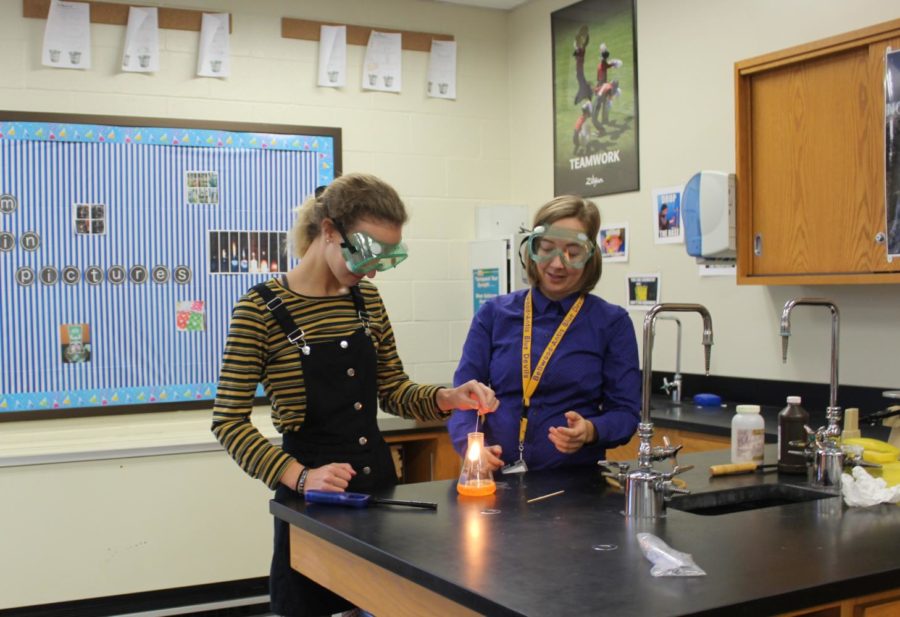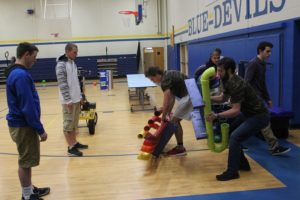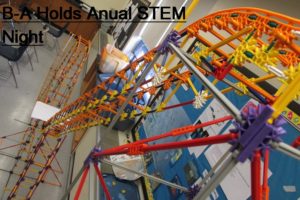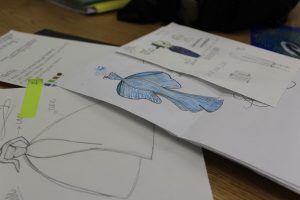B-A science teachers react to plan for STEM funding
Ms. Carrie Clippard works with Brenin Abbot on a chemistry experiment. Ms. Clippard is happy to hear of an increased emphasis of STEM funding.
October 11, 2017
Teachers at Bellwood-Antis aren’t sure how much B-A will benefit from the Department of Education’s plan to invest more in STEM, but they’re pleased the effort is there.
The White House said last week that the Education Department was to spend $200 million a year on grants that promote STEM: science, technology, engineering and math education, and most importantly computer science.
Some teachers at B-A were skeptical of just how much the funding would help Bellwood-Antis.
“The amount of money being invested by the White House is small, because most educational funding comes locally,” science teacher Mrs. Alice Flarend said.
The push for improving STEM education, especially for minorities, students in rural communities, and girls, has been a priority of Ivanka Trump, the president’s daughter and adviser, who has been at several events with the Education Secretary Betsy DeVos to promote her ideas.
“Greater access to STEM and computer-science programs will ensure that our children will develop the skills they need to compete and to win in the workforce,” President Trump said in a recent Washington Post article.
At Bellwood-Antis STEM programs are important. Every year B-A has a STEM Night where colleges and businesses come and show STEM activities while students and teacher get to showcase the community on what they have done in class with STEM. Bellwood requires three years of STEM courses, as do 26 out of 50 states.
Two B-A teachers see the investment as a way to get more representation in STEM.
Ms. Clippard, the high school Chemistry teacher, said she is happy that Trump is planning on investing in STEM in public schools.
“The number of women to the number of men is a lot lower (in STEM fields),” Ms. Clippard said.
Mr. Goodman, the ninth grade Earth Science teacher, is also happy with the new investment in STEM. He says that he’s always happy when anyone invests in public schools, especially when it promotes diversity.
“Generally there is a lack of gender and ethnic diversity for students entering STEM educational programs and career fields,” Mr. Goodman said.
Mrs. Flarend thinks that there is no difference that Trump is investing in STEM because most educational funding comes locally. But, she says, it was a nice gesture.
“You’re getting more diverse people with more diverse ideas so we can solve more problems and maybe solve problems more effectively in more different ways,” Mrs. Flarend says.
Elizabeth Hill, a spokeswoman for the Education Department, said: “We look forward to working with the White House and Congress on identifying grant funds to use for this important initiative.”
Bellwood-Antis may not yet know how the money from Trump’s new investment to the STEM programs in public schools will affect the district. However, there is hope that it helps some of the public schools around the United States that need it.









